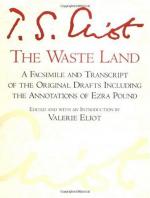|
This section contains 6,356 words (approx. 22 pages at 300 words per page) |

|
SOURCE: Pratt, Linda Ray. “The Holy Grail: Subversion and Revival of a Tradition in Tennyson and T. S. Eliot.” Victorian Poetry 11, no. 4 (winter 1973): 307-21.
In the following essay, Pratt compares the use of the Grail myth in Alfred Tennyson's Idylls of the King and T. S. Eliot's The Waste Land, contending that both authors have significant differences in the way they view the legend—for Eliot, the Grail is representative of individual salvation, while for Tennyson, the quest for the Grail is an act that deflects man from the responsibilities he must assume in the real world.
The modern writer's need for myth is acute in a society which lacks any cohesive belief or coherent design of its own. In portraying just such a society in their long poems, Idylls of the King and The Waste Land, both Tennyson and T. S. Eliot employ the mythic structure inherent...
|
This section contains 6,356 words (approx. 22 pages at 300 words per page) |

|


